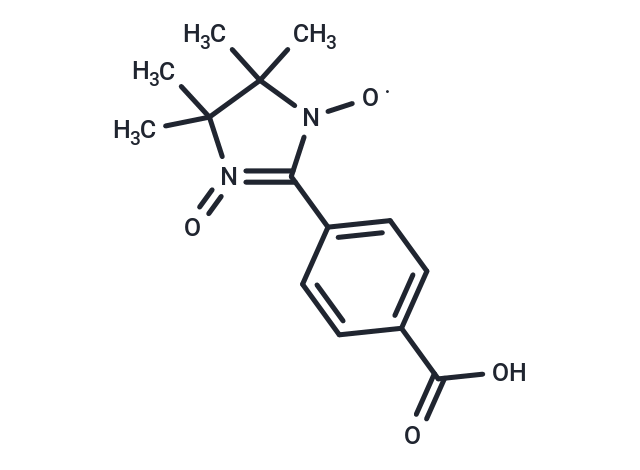Shopping Cart
Remove All Your shopping cart is currently empty
Your shopping cart is currently empty
Carboxy-PTIO is a highly effective nitric oxide (NO) scavenger known for its rapid reaction rate with NO, resulting in the formation of nitric dioxide (NO2). Its direct scavenging action against NO plays a crucial role in preventing hypotension and endotoxic shock, particularly in lipopolysaccharide-stimulated rat models.

| Pack Size | Price | USA Warehouse | Global Warehouse | Quantity |
|---|---|---|---|---|
| 25 mg | $1,520 | Inquiry | Inquiry |
| Description | Carboxy-PTIO is a highly effective nitric oxide (NO) scavenger known for its rapid reaction rate with NO, resulting in the formation of nitric dioxide (NO2). Its direct scavenging action against NO plays a crucial role in preventing hypotension and endotoxic shock, particularly in lipopolysaccharide-stimulated rat models. |
| In vitro | Carboxy-PTIO, at a concentration of 200 μM and administered 1 hour before physalin A for a duration of 24 hours, effectively inhibits the increase in NO expression triggered by physalin A, without affecting baseline NO levels[1]. Furthermore, it mitigates the physalin A-induced activation of apoptotic pathways by preventing the cleavage of procaspase-3 and PARP, downregulating ICAD expression, and reducing nuclear DNA fragmentation[1]. Additionally, Carboxy-PTIO does not alter iNOS expression levels but negates the physalin A-induced reduction in both mTOR and phosphorylated mTOR, while also inhibiting the autophagic process by preventing the conversion of LC3 I to LC3 II in A375-S2 cells[1]. This was corroborated by a Cell Viability Assay on A375-S2 cells, where Carboxy-PTIO, pre-administered at 200 μM for 1 hour followed by physalin A exposure for 24 hours, decreased the cleavage of procaspase-3 and PARP induced by physalin A[1]. |
| In vivo | Carboxy-PTIO (intravenous injection; 0.056-1.70 mg/kg/min; infused for 1 hr beginning 90 min after the LPS injection) significantly ameliorates hypotension, renal dysfunction, and enhances survival rates in LPS-treated SD rats by directly scavenging nitric oxide (NO), without affecting these parameters in normal rats. |
| Molecular Weight | 277.3 |
| Formula | C14H17N2O4 |
| Cas No. | 145757-47-7 |
| Smiles | CC1(C)N([O])C(c2ccc(cc2)C(O)=O)=N(=O)C1(C)C |^1:4| |
| Storage | Powder: -20°C for 3 years | In solvent: -80°C for 1 year | Shipping with blue ice/Shipping at ambient temperature. |
| Size | Quantity | Unit Price | Amount | Operation |
|---|

Copyright © 2015-2026 TargetMol Chemicals Inc. All Rights Reserved.